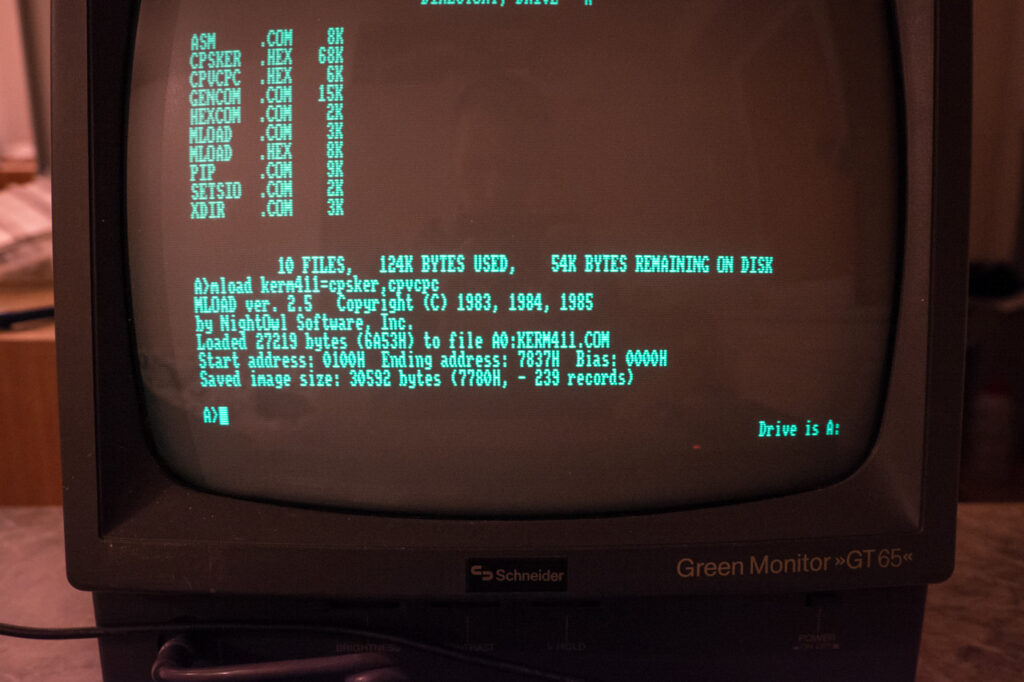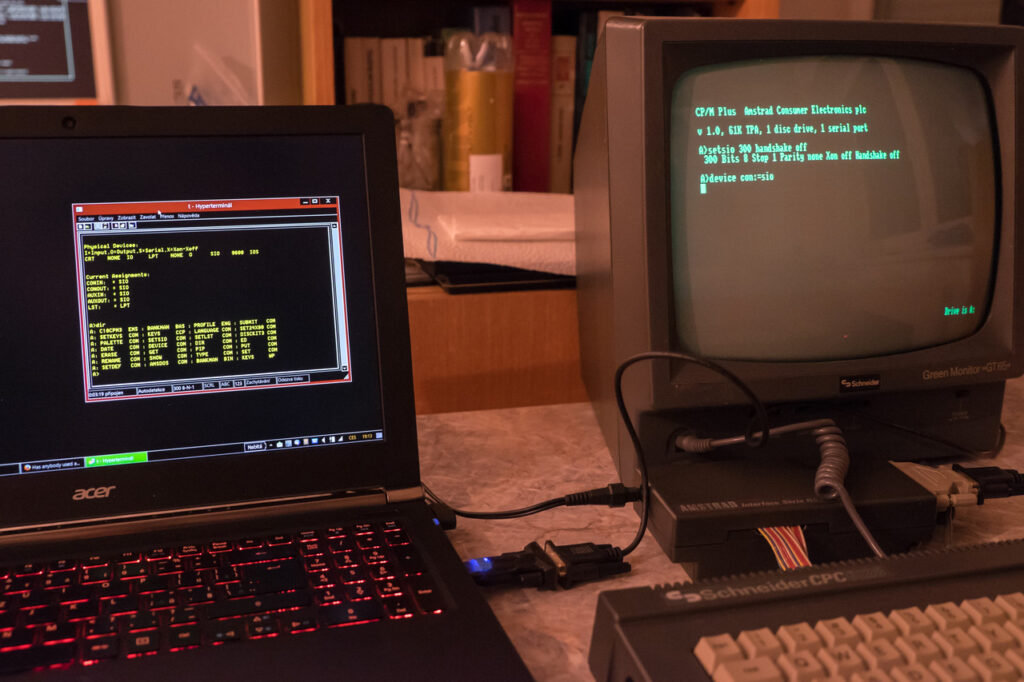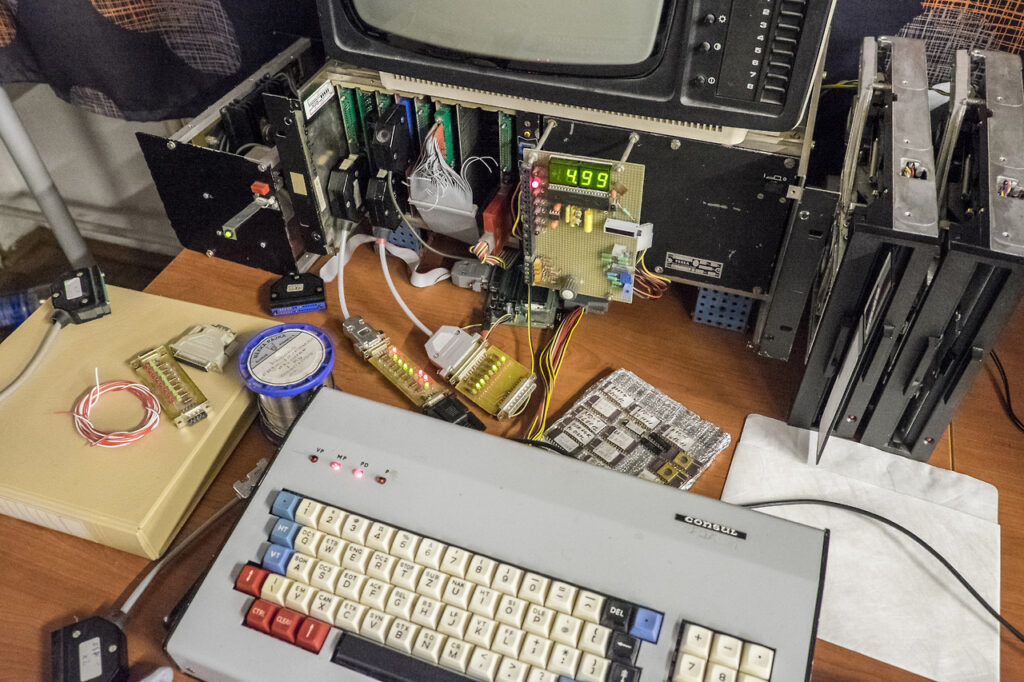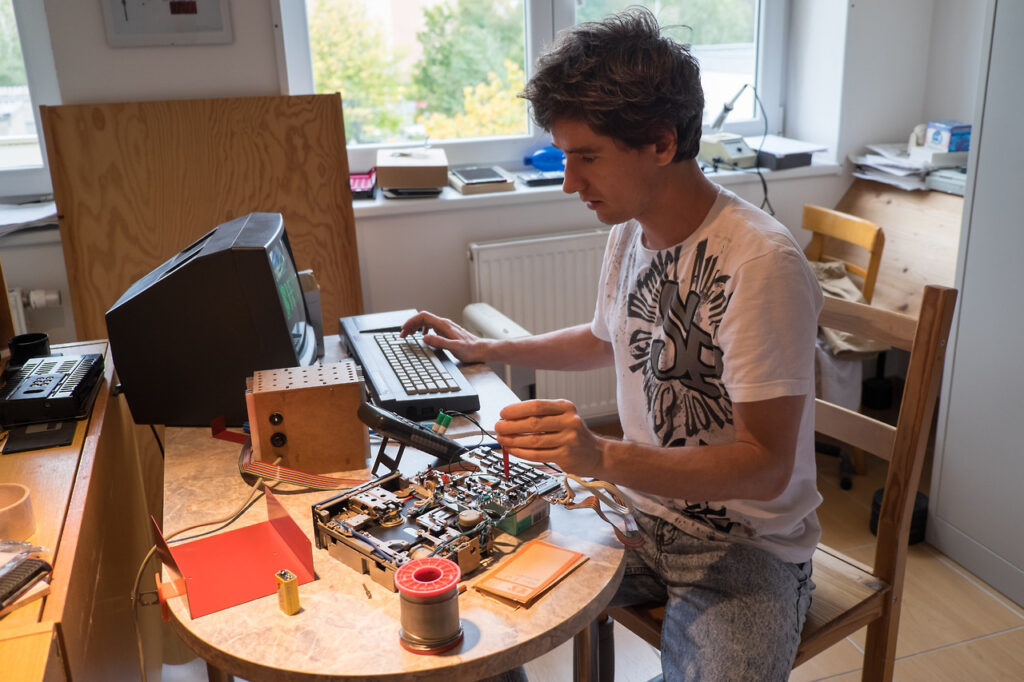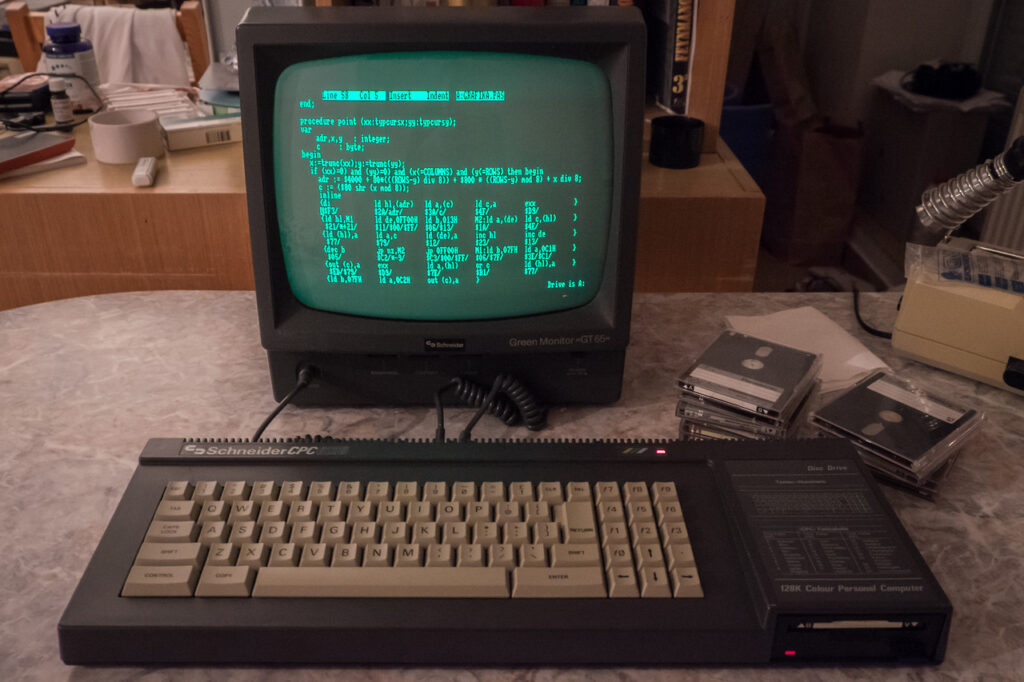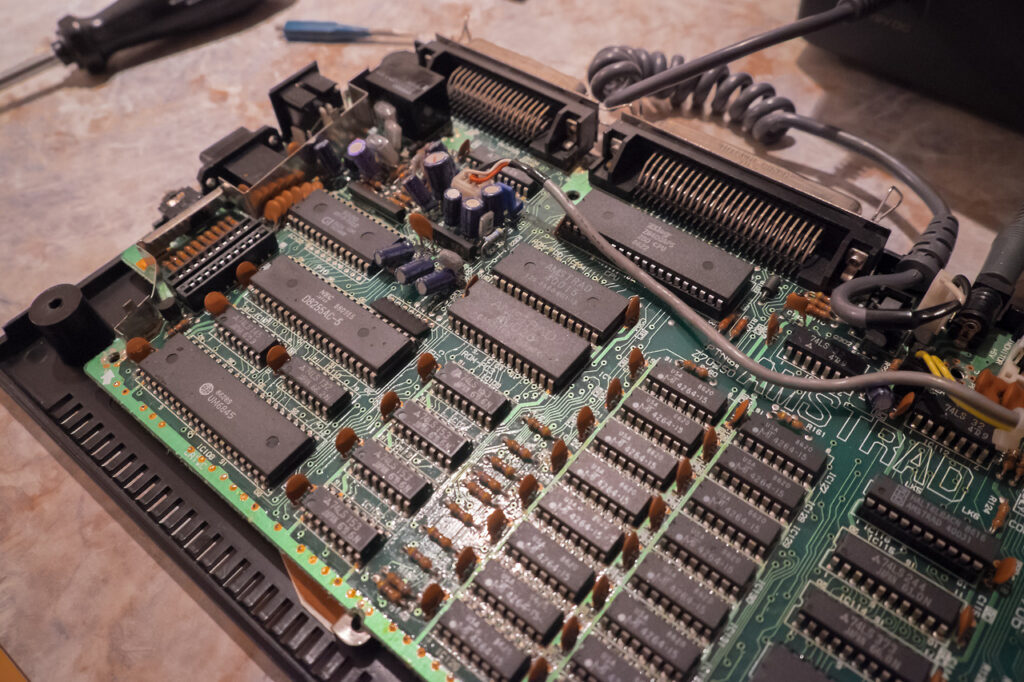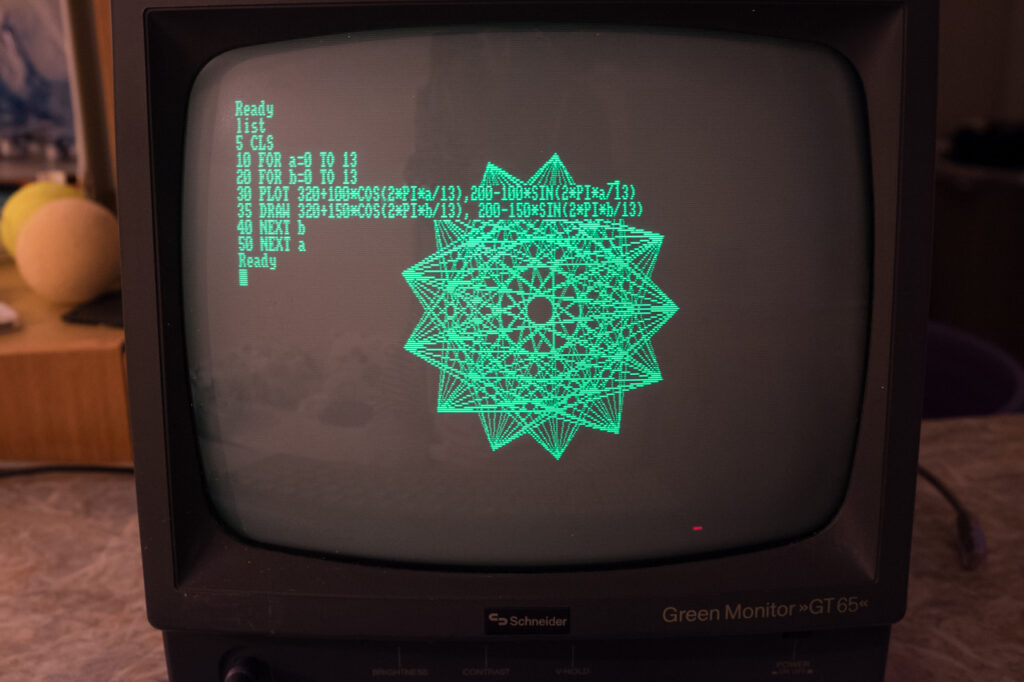Kermit Setup and CP/M
Don’t expect fancy setup utilities in CP/M. This is the process to create a machine compatible version of Kermit (terminal emulator software). MLOAD.COM takes the main program file in HEX and modifies it using the machine specific HEX file. The result is an executable file (COM) of the desired program.
Although there were text-based DOS programs around even in the 90s, their interface was usually far more user friendly with all the setup utilities, pull-down menus and other cool features. CP/M and early DOS programs were a perfect example of how simple and crude the software from the early- and mid- 80s was.
Kermit also reminds me a big advantage of the “PC compatibility”. In theory, the CP/M software was universal. However, different floppy formats, different pinouts on serial/parallel ports and different screen handling commands made life much tougher for both software developers and users.
